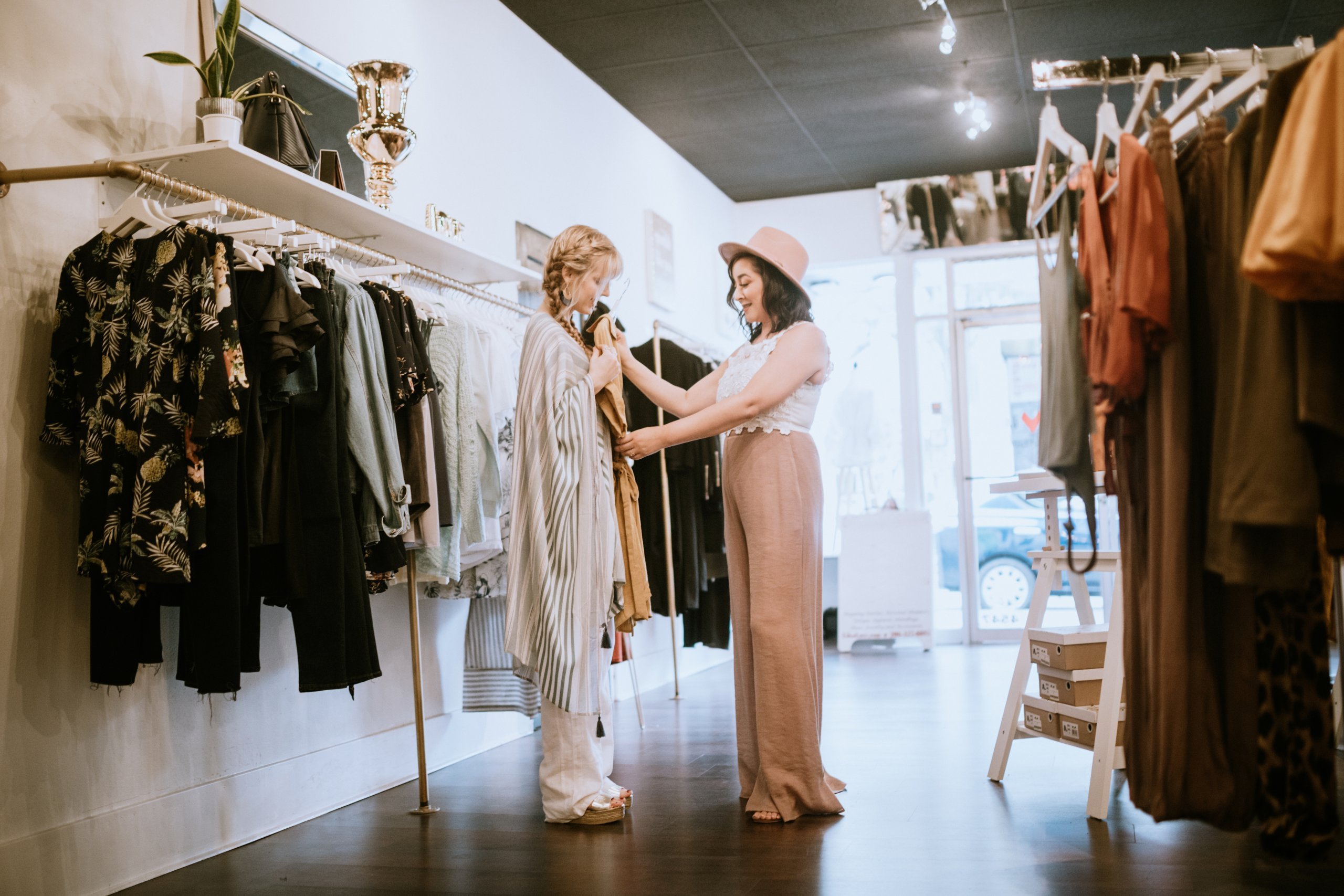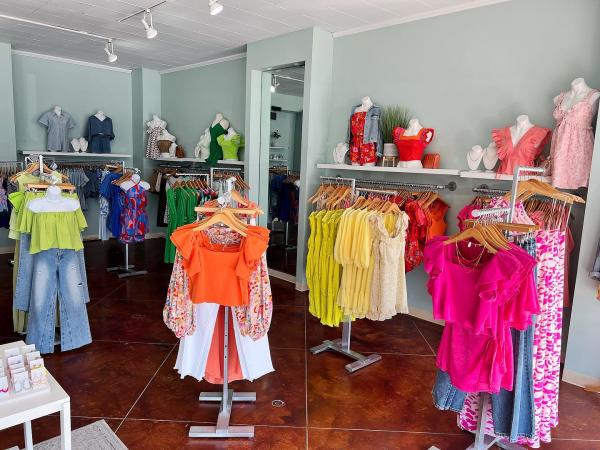A Beginner's Overview to Navigating the Boutique Fashion Scene
A Beginner's Overview to Navigating the Boutique Fashion Scene
Blog Article
A Deep Dive Into the World of High-Fashion Runways: Understanding Clothes as Art
High-fashion runways have actually become arenas where clothes transcends its practical beginnings, evolving into an innovative type of artistic expression. Designers, just like skillful artists, weave elaborate narratives via shade, type, and fabric, challenging standard standards and redefining charm requirements. These shows are greater than plain displays; they are immersive experiences, where every stitch and joint narrates rich with social importance and avant-garde technology. As we check out these sartorial spectacles, we must ponder: what function does fashion play fit societal worths, and just how does it mirror the ever-changing tapestry of human emotion and identification?
The Advancement of Runway Reveals
The trajectory of runway programs has transformed significantly over the decades, progressing from unique industry occasions to captivating eyeglasses that blend style with art. Generally, path shows were intimate events, kept in ateliers or tiny locations, largely gone to by buyers and industry experts. These very early discussions concentrated on the garments' workmanship and industrial viability, supplying a straight and practical screen of seasonal collections.
As the style market broadened, the nature of path shows began to change. The 1970s and 1980s marked a turning factor, with designers seeking to differentiate themselves with even more staged presentations.
Recently, innovation and social media have better revolutionized runway programs, making them available to a worldwide target market. Livestreaming and digital platforms have democratized fashion, permitting lovers worldwide to witness these occasions in real-time (boutique fashion). This evolution reflects a broader cultural change, where high-fashion runways act as a dynamic crossway of efficiency, development, and design
Designers as Dreamer Artists
Exactly how have developers transcended their roles to become visionary musicians? Developers in the high-fashion industry have blurred the lines between functional garment production and the theoretical world of art. This transformation appears in the means they approach their collections, not merely as clothes however as profound expressions of society, feeling, and identity. By accepting creative techniques such as sculpture, painting, and progressive installments, developers craft garments that test standard style norms and elevate them to art types.
Visionary designers attract inspiration from a myriad of resources, including abstract art, historical recommendations, and individual stories. They have an one-of-a-kind capacity to envision and appear ideas that press the limits of conventional fashion, commonly redefining aesthetic standards in the process. This imaginative resourcefulness is showcased with remarkable silhouettes, ingenious products, and detailed workmanship, which welcome visitors to experience fashion as more than just wearable things.
Moreover, the runway serves as a canvas for these musicians, where lighting, songs, and set design coalesce to create immersive experiences. These presentations are not simply display screens of apparel yet are orchestrated performances that stimulate emotion and prompt thought, attesting the designer's role as a real artist in the contemporary cultural landscape.
Social Influences in Style
Cultural tapestry weaves its elaborate patterns into the fabric of fashion, affecting designers globally. The vibrant interchange of social stories, customs, and icons informs and inspires collections that grace high-fashion paths.
The impact of society on fashion is commonly seen in the reinterpretation of standard garments and patterns. The use of Japanese bathrobes, Indian saris, or African prints in modern fashion shows a mix of cultural credibility and modern-day aesthetics. Developers such as Valentino's Pierpaolo Piccioli and Alexander McQueen's Sarah Burton have been known to include rich cultural concepts into their couture collections, converting background right into wearable art.

Advancement in Material and Style
Development in material and layout regularly reshapes the landscape of high-fashion, pushing borders and redefining possibilities. Designers are significantly exploring the integration of technology, such as 3D printing, which enables for the creation of complicated frameworks that were previously unimaginable.
Additionally, sustainability has actually become an essential style in material development. The garment industry is observing a rise in making use of environment-friendly materials, stemmed from recycled plastics, organic fibers, and even naturally degradable elements. These technologies not only supply new textures and aesthetic appeals however likewise address critical environmental issues. Developers are welcoming these products to craft garments that are both aesthetically striking and aware of their environmental impact.
In regards to layout, avant-garde silhouettes and speculative forms are constantly reinventing the path. By integrating non-traditional products and innovative strategies, designers grow garments that obscure the line between fashion and art, setting new requirements for creative thinking and expression in the high-fashion ball.
Impact of Style on Culture
Style wields an extensive influence on society, functioning as both a representation of cultural identification and a stimulant for social modification. Via its development, style has mirrored societal shifts, encapsulating the zeitgeist of different periods. As an example, the flapper outfits of the 1920s embodied a newfound sense of women's freedom, while the bold prints of the 1960s echoed the innovative spirit of the time. High-fashion runways, specifically, serve as platforms for difficult standards and redefining elegance requirements. Developers use these places to resolve review pushing social concerns, from sustainability to variety, thus forming public discussion.
Additionally, fashion has the power to bridge social voids, fostering understanding and appreciation among varied teams. As globalisation accelerates, the cross-cultural exchange of fashion ideas ends up being significantly considerable, promoting inclusivity and variety. The rise of streetwear, originating from urban subcultures, illustrates how style can go beyond socio-economic boundaries, granting individuals a way of self-expression and empowerment.
Essentially, style is not simply concerning aesthetics; it is a vibrant force that affects values, mindsets, and societal progress (boutique fashion). By continually connecting with social and cultural currents, fashion stays an indispensable part of the cumulative human experience

Verdict
Developers, comparable to visionary musicians, manage collections that reflect identification, feeling, and social stories, pop over here testing conventional visual appeals. This crossway of style and creativity not only captivates audiences around the world however likewise affects societal perceptions and advertises a deeper admiration for cultural diversity.

Social tapestry weaves its elaborate patterns into the textile of style, affecting designers globally.Style wields a profound influence on society, offering as both a representation of social identity and a catalyst for social modification.
Report this page